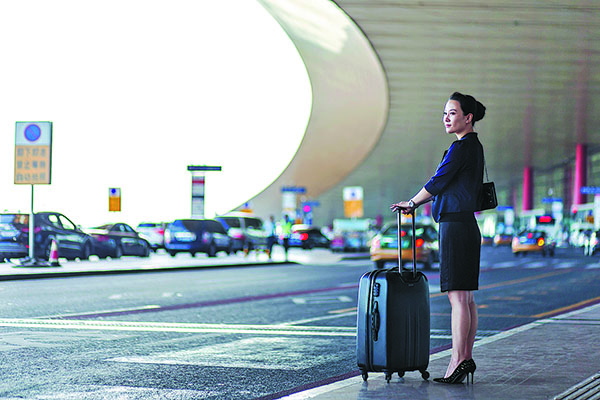

Wang Xin, a marketing manager based in Shanghai, paid special attention to the carbon consumption figures shown on a flight booking platform.
He was planning a business trip to Shenzhen, Guangdong province, in November.
"When booking a flight, I will first check the flights that meet my time requirements. If multiple flights within the time range are approximately the same price, I will definitely choose the one with less carbon consumption," Wang says.
Business travelers like Wang have shown a preference for trips that leave a smaller carbon footprint, according to a recent report by the business travel management division of Trip.com Group, a major online travel agency based in Shanghai.
More than 60 percent of its business customers have opted for low-carbon travel products, the report says.
"The low-carbon travel trend began in 2022 when we launched flight carbon emission data, which has been recognized by an increasing number of business clients," says Zha Jun, an official with the travel management division.
Subsequently, the carbon emission data of hotels, trains and cars have been added.
Business travelers have been encouraged to use new energy vehicles and save electricity and water at hotels, as well as food on flights.
Those who choose low-carbon travel products can also get incentives, such as air miles and credits that can be used to reduce future travel costs.
According to the US-headquartered Global Business Travel Association, 25 percent of companies worldwide consider carbon footprint and sustainability important in business travel. Among them, 35 percent have implemented sustainable policies.
Low-carbon travel offered by travel agencies can help satisfy the companies' need to monitor carbon data in the field, experts say.
Manufacturing industry travelers contribute nearly a quarter of low-carbon business travel orders, significantly outpacing other industries, followed by internet, IT, finance and retail sectors, the report shows.
"The manufacturing industry places great emphasis on low-carbon business travel and has contributed the highest number of corporate low-carbon bills," Zha says.
For example, the Wurth Group, a company in the development, production and sale of fastening and assembly materials, has seen its low-carbon business travel orders grow by more than 30 percent year-on-year, the report shows.
The data reveals that the top six industries in China account for 90 percent of low-carbon business travel orders.
Fueled by the ongoing market recovery, low-carbon business travel orders have increased by 71.35 percent compared with the same period last year. The catering, education and entertainment industries have become the fastest-growing sectors.
Shenzhen topped the list of cities for the number of companies practicing low-carbon business travel.
Shenzhen is one of the first national low-carbon pilot cities, and its companies are paying more attention to low-carbon business travel and carbon-neutral goals, with the proportion of low-carbon practices in 2023 having increased by 20 percent over the same period last year, according to the report.
Guangdong has emerged as the leading province in low-carbon business travel companies, with eight cities among the top 20.
"I can see my complete carbon footprint for business travel on certain booking platforms, and also the carbon footprint and carbon reduction data of all employees of the company," says Zhang Xiaodong, a business travel manager with the Wurth Group.
At Zhang's company, employees have been encouraged to adopt low-carbon business travel habits and are incentivized in multiple ways, which Zhang says holds significant value for the company in fulfilling social responsibility.
"This provides measurable and verifiable data for both the company and individuals, offering practical data for the business to achieve carbon neutrality," Zhang adds.
Zha from Trip.com Group says the travel agency's visualization of carbon footprint data is catering to the needs of the ever-growing number of companies that place more emphasis on carbon data management.